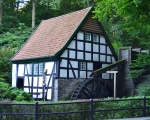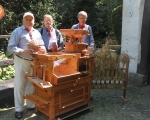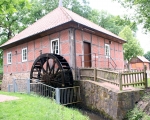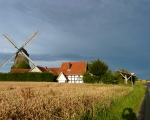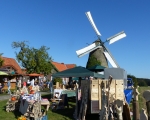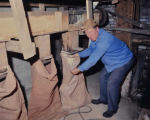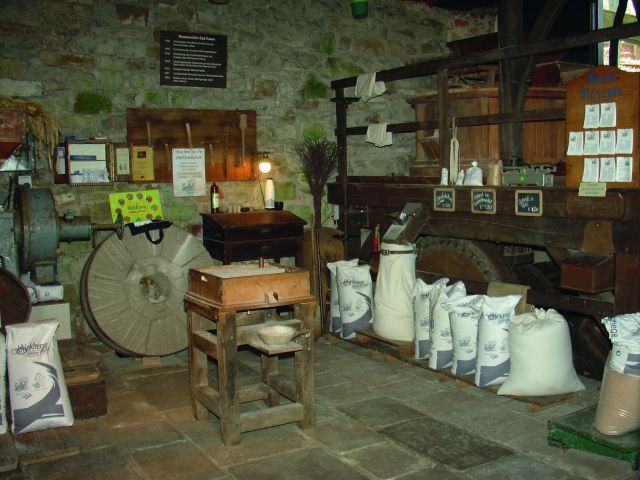Milling trades
"The daily grind" – artisan milling with water or windmills
This proverb goes back to an old profession – the miller. Anyone who wants to learn the miller's trade today will only find a few training opportunities in Germany. The only company in the TERRA.vita region that still offers such training is the Porta Mühle (Porta Mill) in Porta Westfalica. However, old, traditional grinding processes using wind and water power are hardly considered in the curriculum.
The traditional handcraft techniques, such as grinding with millstones, can only be admired at a few locations today. However, of the more than 25 windmills and watermills in the TERRA.vita region, there are some that keep the traditional milling trade alive through regular demonstrations and visits.
The majority of the mills stood idle for a long time and were only restored towards the end of the last century, so that most of the windmills and watermills are functional again today. Anyone who would like to see this for themselves is cordially invited to pay a visit to one of the numerous mills in our region. For example, the Niedersächsische Mühlen-Tour (the Lower Saxony Mills Tour) guides you on an exploration by bike in the Osnabrück region, which is rich in mills. A total of 23 historic windmills and watermills can be explored along a 400-km (nearly 250-mile) long loop route.
The old water mill in Bad Essen, for example, offers particularly impressive insights into the past. The historic half-timbered water mill is open every Sunday from May to September from 2 p.m. to 5 p.m. During this time, a miller is on site to explain the mill and the grinding process. The freshly ground and particularly strong flour is available to buy on site.
Other well-known mills are Knollmeyer's Watermill in the Nettetal, the Heimathaus Telgkamps Mill, the Wöstenesch Watermill in Eggermühlen, the Lechtinger Mill near Wallenhorst, the Nackte Mill in Osnabrück, and the Wallholländer Windmill in Melle. These mills, which use the forces of nature for human craftsmanship, are preserving unique knowledge and skills that have been passed down from generation to generation.
The milling handcraft was included in the nationwide list of intangible cultural heritages by UNESCO in 2018.
Photos:
Cover photo, photos 1 + 2: Old watermill in Bad Essen (Photos: Tourist Information Bad Essen)
Photo 3: Telgkamp's Mill (Photo: Bersenbrück joint municipality)
Photos 4 + 5: Westhoyel Windmill (Photos: Association for the Restoration and Preservation of the Westhoyel Windmill)
Photos 6 to 8: Wöstenesch Watermill (Photos: Georg Geers)
